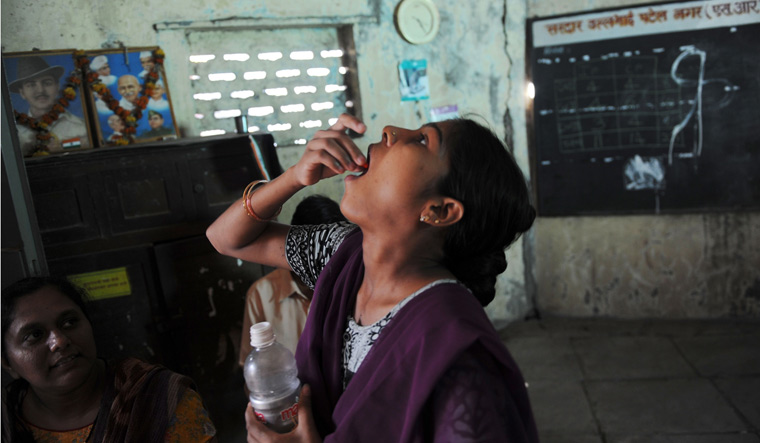COVID-19 has proved to be a major obstacle in India's tuberculosis programme. Between the months of January and June this year, about 5.7 lakh cases (62 per cent of the notifications) of tuberculosis could not be notified. Only about half of TB patients in the country received money from the government for nutritional support during their treatment, according to the Union health ministry.
There has been a 26 per cent reduction in TB case notification as compared to the same period during last year. More children (70 per cent) and women fell off the notification map than men, data suggests.
"With the rapid increase in TB notification, India is closing the gap in ‘Missing million TB cases’—24 lakh cases notified in 2019 against estimated 27 lakh TB cases. The number of missing TB cases has now been reduced to 2.9 lakh in 2019 as against over 10 lakh in 2017. While India was on the right track till March 24, the national and state specific lockdowns due to COVID-19 have affected all the key strategic interventions resulting in almost 60 per cent decline in TB notification during the lockdown period and moving back to the period where the gap between estimated TB case and notified TB cases is increasing," a key health ministry document on the issue reads.
Recent modelling studies to understand the potential effect of the COVID-19 response on TB epidemiology have been published by Stop TB Partnership indicating that over and above the existing cases, there would be an additional 5,14,370 TB cases and 1,51,120 TB deaths over the next five years, according to the document.
To work on the grim situation, the health ministry has asked states to test, trace, follow up and reach out to TB patients, given India’s target to end TB by 2025. The rapid response plan with several measures has been sent out to all additional chief secretaries/principal secretaries (health) by Dr K.S. Sachdeva, head, central TB division, Union health ministry.
According to the plan, government hospitals would need to test all TB patients for COVID-19, and all COVID-19 patients for TB (aside of the ILI and SARI cases), replace smear microscopy (sputum rest) with NAAT testing and trace household and workplace contacts of the TB patient.
Local administrations would need to actively find TB cases in areas where the reporting of cases has gone down.
Private clinics and hospitals should be asked to reopen, and notify TB cases through a phone call. Doorstep delivery of medicines, TB ID cards and patient support services at the district level would need to be provided. Tele-consultation services, follow-ups by healthcare workers would need to be done to ensure that patient visits to hospitals are reduced.
Efforts should be made to ensure that TB patients get their cash benefits, too, the health ministry has said. Pending cash support for the patients should be cleared in a month, according to the rapid response plan. Those who are working with TB patients should be given adequate PPE materials, and salaries and incentives need to be paid on time, the plan reads.
In February this year, the health ministry had said that several states had committed to ending TB (reducing cases by 80 per cent) before the 2025 target—Kerala by 2020, Himachal Pradesh by 2021, Sikkim and Lakshadweep by 2022, and Chhattisgarh, Jammu, Madhya Pradesh, Tamil Nadu, Bihar and Jharkhand by 2025.
In a post-COVID-19 India, however, states would have to renew their efforts to achieve their TB targets.



